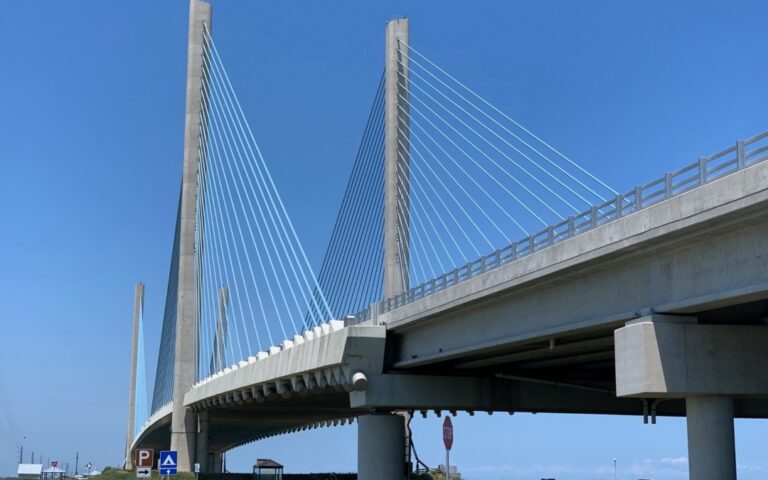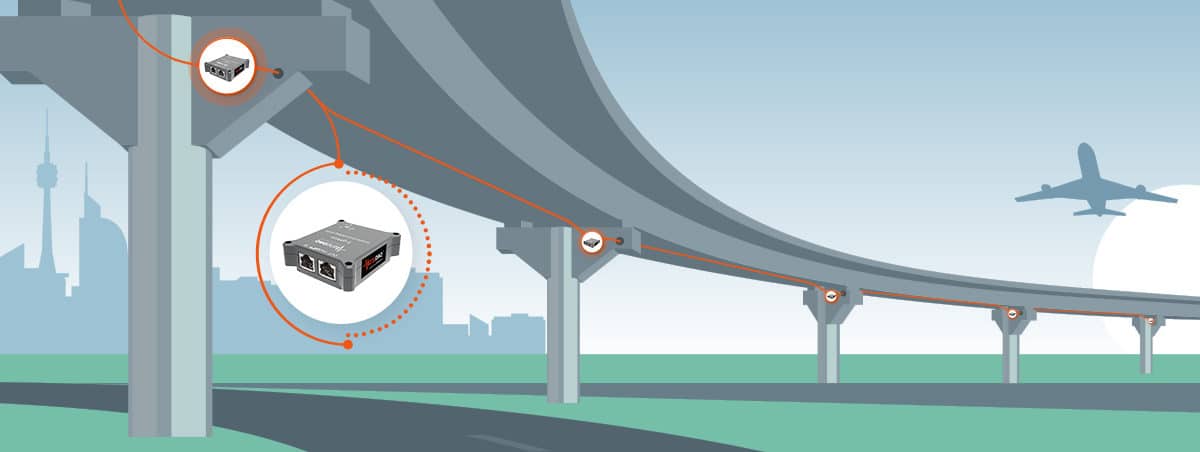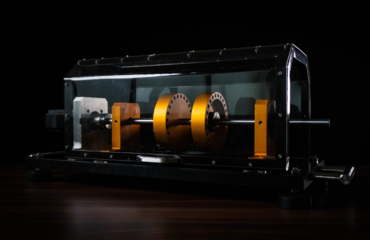SHM sensors may work in tandem with automated analytic systems to provide continuous remote online monitoring of various components of a bridge structure 24 hours a day, seven days a week.
The structure’s data is relayed back to an on-site acquisition and analysis system, which does all of the required analysis; when an aberrant reaction is detected, warning signals are generated and forwarded to bridge maintenance and monitoring personnel.
An automated analysis and sequential warning system may inform bridge owners and operators to suspected flaws and abnormalities.
Alerts on the nature and location of probable problems will be sent and transmitted from the bridge to the bridge owners/managers in a very basic SHM setup.
Information such as the condition rating, real-time damage location, and early symptoms of failure may be derived from the data in a more complex arrangement.

The fear of false alarms is a key concern for most bridge owners.
Recent advancements in signal and data processing, self-calibration systems, and self-testing features, on the other hand, have eliminated or reduced the expense of false alarms and needless site visits.
A well-designed SHM system can, in general, do the following:
a) Monitor structural performance in the face of operational and environmental changes in a proactive manner.
b) Reduce failures due to early identification and so extend the bridge’s remaining life.
c) Reduce wasteful maintenance and life-cycle expenses by optimising inspection budgets using real-time condition data
d) Increase public trust in the structural integrity and safety of buildings.
e) Routine inspections should not need closures or downtime.
Monitoring based on vibrations
Vibration-based monitoring systems were among the first approaches for assessing bridge condition that were suggested.
These methods are founded on the idea that any change in a bridge’s physical characteristics, whether local or dispersed, would be recorded by its dynamic properties evolving.
Typical dynamic qualities in structural engineering relate to modal parameters such natural frequencies, mode shapes, and so on.
Because modal parameters are closely associated with structural dynamic features, changes in modal characteristics may be used to assess the position and severity of structural defects.
The vibration response of the bridge should be studied under controlled or ambient stimulation to understand its dynamic qualities.
The majority of vibration-based monitoring approaches rely on data from accelerometers to track bridge reaction at a global level.
Accelerometers are often used to determine the vertical and/or horizontal accelerations of bridge components at particular locations.
The information acquired from these sensors may be utilised for detection and localisation of abnormal occurrences, depending on the design of the sensor instrumentation architecture.
Monitoring by Strain
While vibration-based monitoring systems are appropriate for monitoring bridge structural behaviour at a global level, their ability to detect small changes in structural dynamic characteristics locally is debatable. As a result, a more recent tendency is to employ local monitoring technologies to detect minor changes in bridge component mechanical characteristics.
Strain monitoring techniques may be used to locally monitor essential bridge components at crucial areas, since damage generally occurs at a local level. Fiber optic sensors and strain gauges are two of the most common strain monitoring sensors. A network of strain sensors may be used to identify the bridge components that have been exposed to excessive stress or deformation as a result of an abnormal occurrence such as bridge overloading.

Challenges in the Real World
Structural Health Monitoring for Bridge Structures has the capacity to gather a large quantity of data regarding the damage status of different structural components on a global and element level.
This vast amount of data may be used to get insight into the structure’s performance history, which is useful information for decision-makers.
Modern SHM systems that are completely linked with statistical models look to be a potential option for reducing civil infrastructure downtime, lowering maintenance costs, and increasing worker safety by removing high-risk jobs (i.e. rope access visual inspection, work at height, exposure to radiation, work in confined space).
However, putting in place a dependable sensor network and deciphering the acquired data remains a challenge.
On the hardware side, designing an effective structural sensor network that can gather appropriate and trustworthy information on the status of damages is one of the primary issues.
At this point, the instrumentation engineer must decide on the kind, position, and quantity of sensors that will be used to instrument the structure of interest.
Another difficulty is data ownership, security, and management.
Making meaningful interpretations of real-time data and incorporating them into decision-making processes will be difficult on the analytical front.
While there are many SHM sensors on the market, the development of data-driven decision-making assistance algorithms has received less attention.
An objective decision-making tool digs deep into large data to warn bridge owners of any significant changes in the structure’s existing status.
The emergence of big data and cloud computing will enable engineers to get a better understanding of real-time data and transform it into actionable decisions for owners and maintenance managers.




